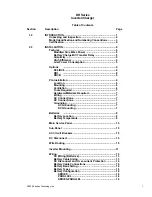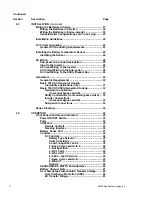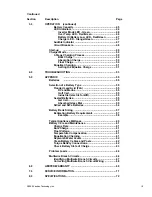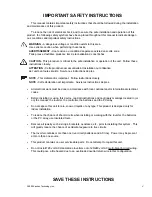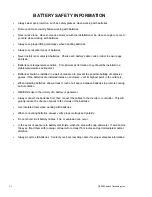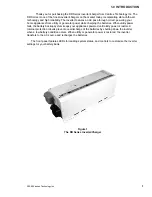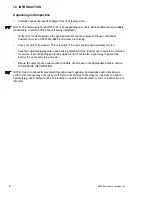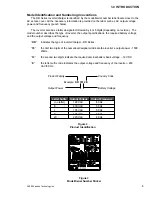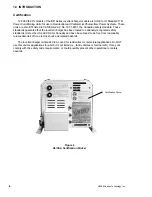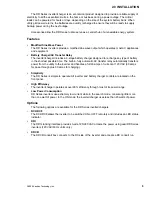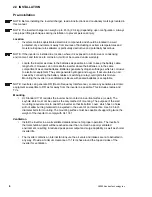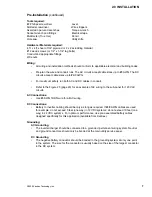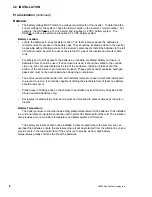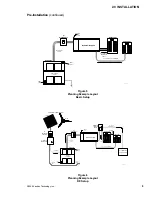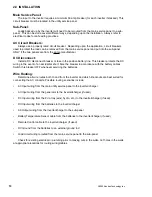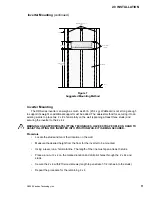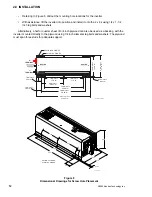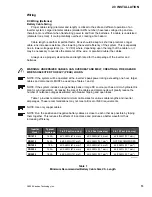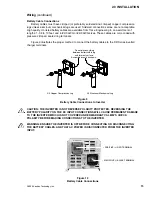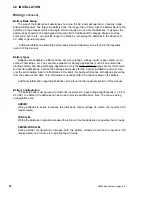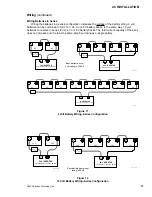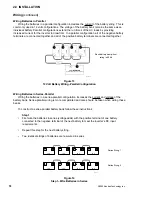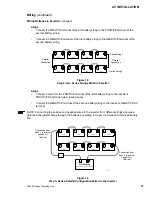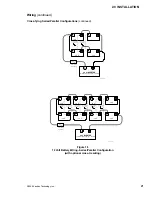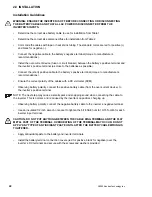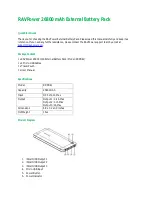
7
2.0 INSTALLATION
©2000 Xantrex Technology Inc.
Pre-Installation
(continued)
Tools required:
#2 Phillips screw driver
Level
Slotted screw driver
Wire strippers
Assorted open-end wrenches
Torque wrench
Socket wrench and fittings
Electrical tape
Multimeter (True rms)
Pencil
Hole saw
Utility knife
Hardware / Materials required:
4 ft. x 4 ft. sheet of 3/4" plywood or 2 x 4s studding material
#12 wood screws (or 1/2" x 1-1/4" lag bolts)
Conduit and appropriate fittings
Wire nuts
Wiring:
All wiring and installation methods should conform to applicable electrical and building codes.
Pre-plan the wire and conduit runs. The AC circuits accept cable sizes up to #6 AWG. The DC
circuits accept cable sizes up to #4/0 AWG.
For maximum safety, run both AC and DC cables in conduit.
Refer to the Figure 25 (page 29) for an example of AC wiring to the sub-panel for 120 VAC
circuits.
AC Connections:
Use #6 AWG THHN wire for all AC wiring.
DC Connections:
Battery to inverter cabling should be only as long as required. If #4/0 AWG cables are used
for example, do not exceed 5 feet (one way) in 12 VDC systems; do not exceed 10 feet (one
way) in 24 VDC systems. For optimum performance, use pre-assembled battery cables
designed specifically for this application (available from Xantrex).
Grounding:
AC Grounding
The inverter/charger should be connected to a grounded, permanent wiring system. Neutral
and ground conductors should only be bonded at the main utility service panel.
DC Grounding
The negative battery conductor should be bonded to the grounding system at only one point
in the system. The size for the conductor is usually based on the size of the largest conductor
in the DC system.
Содержание Trace DR Series
Страница 1: ...Installation Operator s Manual DR Series Inverter Charger ...
Страница 2: ......
Страница 81: ......
Страница 82: ......
Страница 83: ......



